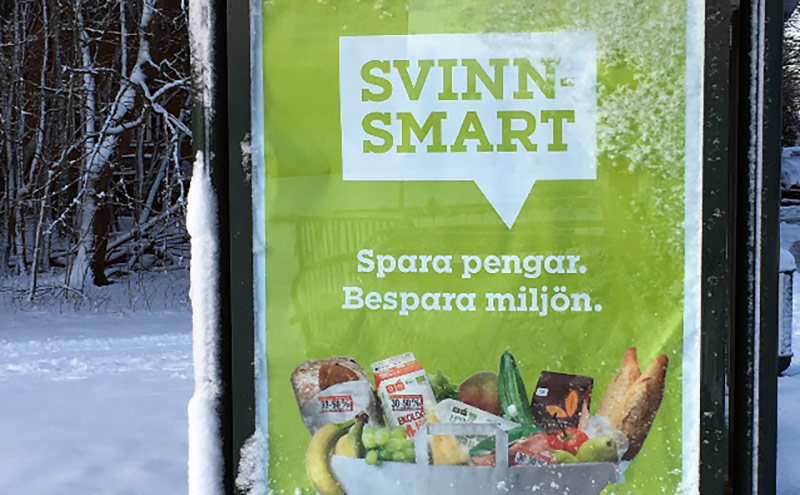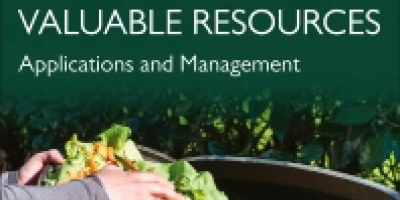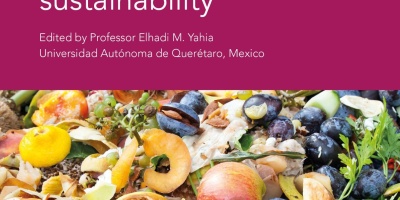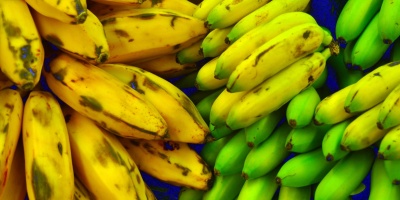In this piece, FCRN members Karin Östergren and Anne Normann comment on the trending behavioral patterns and consumer perspectives around SDG12.3, food loss and waste.
 Professor Karin Östergren is senior researcher at the Section for Sustainable Food Systems at RISE Agrifood and Bioscience and Adjunct Professor at Department of Food Technology, Engineering and Nutrition of Food Engineering, Lund University. For the past 17 years she has been project leader for a variety of projects focusing on exploring the benefits of combining her food process engineering expertise with environmental systems analysis. Research addressing resource efficiency and how to reduce food waste has been a focus in most of these projects. Recent projects are FUSIONS, where she was responsible for the work towards the harmonization of food waste monitoring methods and now she is also a part of the follow up project REFRESH.
Professor Karin Östergren is senior researcher at the Section for Sustainable Food Systems at RISE Agrifood and Bioscience and Adjunct Professor at Department of Food Technology, Engineering and Nutrition of Food Engineering, Lund University. For the past 17 years she has been project leader for a variety of projects focusing on exploring the benefits of combining her food process engineering expertise with environmental systems analysis. Research addressing resource efficiency and how to reduce food waste has been a focus in most of these projects. Recent projects are FUSIONS, where she was responsible for the work towards the harmonization of food waste monitoring methods and now she is also a part of the follow up project REFRESH.
 Anne Normann has MSc in Food Science with a background in clinical nutrition as a dietitian. She has been working at SIK/SP Food and Bioscience since 2012 as a project manager in sensory and consumer science. She mainly has been working with experimental research project in the field of consumer behavior, where the focus has been to increase the knowledge about why, how, when and where consumers make decisions about food choices and what could change that behavior. She started to work in the area of food waste in 2014 because of the Cosus project. She is now working in the department of Product & Perception at RISE Bioscience and Materials.
Anne Normann has MSc in Food Science with a background in clinical nutrition as a dietitian. She has been working at SIK/SP Food and Bioscience since 2012 as a project manager in sensory and consumer science. She mainly has been working with experimental research project in the field of consumer behavior, where the focus has been to increase the knowledge about why, how, when and where consumers make decisions about food choices and what could change that behavior. She started to work in the area of food waste in 2014 because of the Cosus project. She is now working in the department of Product & Perception at RISE Bioscience and Materials.

Generally, as researchers we are strongly focused on the future and frustrated that our research is not taken up fast enough in real life. However, sometimes we forget how much has been achieved. When it comes to food waste, a lot has happened in the last 5-10 years. In this post, we want to bring up some examples of particularly promising trends and developments in Sweden, both in terms of industry action and consumer awareness. In this post we discuss these in light of new, global initiatives to reduce food waste.
S DG12: Ensure sustainable consumption and production patterns *SDG12.3: By 2030, halve per capita global food waste at the retail and consumer levels and reduce food losses along production and supply chains, including post-harvest losses.
DG12: Ensure sustainable consumption and production patterns *SDG12.3: By 2030, halve per capita global food waste at the retail and consumer levels and reduce food losses along production and supply chains, including post-harvest losses.
Here are some projects that have been particularly important for our own engagement and understanding as researchers. The first is REFRESH, an EU initiative which is developing a framework for action targeting the SDG12.3* goal. It is decision-making research by industry and individual consumers and sustainable value chains. Another is COSUS (a SUSFOOD ERA-net research project under the topic “Understanding consumer behavior to encourage a (more) sustainable food choice”) focusing on the consumer and what could be manageable by individuals. FUSIONS developed a framework for quantifying food waste and mapped the current policy arena at an EU-level to better understand how to move forward. Finally there is the SIANI expert group on food waste, focusing on the challenges in global food chains and how industrialized countries such as Sweden can make a difference in food waste reduction.
Last year we were invited to write on food waste for Konsumtionsrapporten (summary in English on page 8-9), which is a series of reports on private consumption in Sweden including official statistics on households and more in-depth analyses written by researchers on different subjects. This exercise generated many discussions on the state of current knowledge and future research needed. One of our conclusions is that compared to just a few years ago, Swedish actors across the food chain seem to be more willing to increase their work to prevent food waste. Combined with the launch of a National collaboration project on food waste, starting on October 4th, we think that we will see a lot more action and practical results in the near future.
A look at the consumer perspective of food waste
A lot of progress has been made and we now have a protocol on how to measure food waste globally (FLW Accounting Protocol and Standard) a European protocol is under discussion and a set of European initiatives have been set up aimed at preventing food waste. However, in our recent research we focus on the consumer perspective of food waste and food that could have been eaten if handled differently. The research is based on the project COSUS and here we discuss it using examples from Sweden, together with some personal reflections.
Will the SDG goal of 50% reduction be possible? We are quite sure that it will be if we continue expanding our engagement and research at the same pace as we did in the last decade. For example in Sweden, according to statistics from the Swedish Environment Protection Agency, consumers decreased the amount of solid food waste, including unavoidable food waste like peel from fruits and coffee grounds in their bins considerably between 2012 and 2014 (from 81 to 74 kg/person and year). Food waste poured down the drain (mostly coffee) was included in the statistics for the first time in Sweden 2014 and corresponded to 26 kg/person; in total 45 kg/person and year was considered avoidable food waste 2014.
Small amount adds up to huge amounts – are we really aware?
The average Swedish consumer wastes about 125g of edible food/person each day (including beverages) and about the double according to the statistics for 2014. It does not seem that much, a half glass of milk, a cup of coffee or an apple, but added up over a year that equals about 450 000 tons of edible food/year in Sweden. How can we make the consumers aware that this maybe perceived small amount wasted really adds up?
Fruits and vegetables account for the largest part of the food waste, but also bread and left-overs are frequently wasted. Food and beverages thrown down the drain is mostly coffee and tea but about ¼ are dairy products.
Through successful awareness raising trends have changed quickly the last years. For example, selling products on sale if they are close to the best before date is seen as a way of taking responsible as well as to prepare or cook meals from food that would otherwise be wasted due to its appearance or data labelling (but still perfect for eating).
The awareness is increasing
As surveys on consumer attitudes show (NB. link in Swedish), more consumers pay attention to the food waste debate and food labelling (e.g. best-before versus expiration dates) when in 2015 compared to in 2009. The majority of consumers mentioned the environment as an important reason for reducing food waste, but many consumers are still careful not to eat food with a passed best before date, based on concerns of getting sick, even though the food is perfectly fine to eat. Research in the area has shown that consumers more readily discard a damaged food item in store than at home, which could be explained by the fact that the consumer already has paid for it once they have brought it home (e.g De Hooge et al., 2016).
The challenge is to communicate the information about best-before versus expiration date successfully, in an understandable and consistent way. The National Food Agency in Sweden has developed guidelines for supporting consumers, which is a good start, but further communication is needed to reach out to the Swedish households in general.
It´s getting trendy
You could almost say that sustainability and especially food waste prevention has become trendy. Grocery stores now have campaigns (see app promotion ‘Waste smart -Save money. Save the environment’ at bus stop by a food retailer to the left), some stores use well-known chefs for TV-commercials educating consumers to use ingredients in new ways. Online food shopping is still in its early days even though it´s a growing market (NB. link in Swedish). In addition to grocery chains finding new ways to earn money, there are also new websites and applications where food can be sold instead of being wasted. Two examples are Matsmart (Matsmart has contributed to the impressive number of over 700 ton of saved food during 2016 (http://www.mynewsdesk.com/se/matsmart)) , buying food approaching its best before date and selling it at a reduced price and Karma, connecting restaurants and cafes that have left overs to consumers who pick it up later the same day. In REFRESH, a food waste solution contest collected almost 50 great ideas. The contest was replicated in China showing that the winds of change are blowing globally. In Sweden, online grocery shopping and pre-packed food bags with ingredients and recipes are a growing industry in Sweden, they are popular among consumers and result in new delivery routes for food. Whether they result in more or less consumer stage food waste is not yet known. Online shopping, where employees pack orders, could result in a better treatment of the groceries and less damages of products which could result in less waste, but the consumer might discard some products when they get them if they don´t match their expectations from ordering and the same goes for the dinner solutions, if recipes are not to your liking. It might however, be the more open-minded consumers that have these food bags on subscription, but all of this are just assumptions.
In the same discussion, it is important to mention that it is often considered healthier by the consumer and trendier to consume more fresh products such as vegetables and greens over e.g. frozen and canned alternatives (WRAP, 2007), which is true in many cases considering picked fresh at farm, but frozen and canned food are good alternatives, and they have a longer shelf life. Bioavailability of some nutrients actually increase when some produce is processed, and so canned food can have a good nutritional value (for example tomatoes and carrots). To summarize, the trend to choose the fresh alternatives, might result in more food waste since products has shorter shelf life and demand consumers to have the knowledge about what food to consumer before another.
Towards SD12.3
From the research angle we are gaining more and more knowledge about consumers and how to engage with them (via e.g. REFRESH, COSUS). In Sweden, as mentioned above, grocery stores have done a lot already: some run campaigns to increase the awareness of the issues, while some stores use price reductions and processing of items to sell products that otherwise would have been wasted.
But even if we see increased engagement among stakeholders, these engagements often rests on individual ‘heroes’ within food businesses investing time and energy in competition with other business activities (e.g. SIANI project). Collaboration in the food chain is of outermost importance, e.g. within the REFRESH project creating a blueprint for collaboration in the food chain.
The SDG12.3 is also one of the areas mentioned in the brand new Swedish Food Strategy launched January 2017 which mean new resources and an accelerating engagement hopefully focusing on consumer communication and collaboration in the food chain. As part of the Food strategy a new National program on food waste was launched in Sweden October 4th 2017.
Combating food waste is getting trendier and we need to keep the engagement up. How can we, in the research community, support and push forward? For example, how do we develop efficient communication strategies to consumers, industry and policymakers, taking into account cultural, emotional and intuitive influences which to a large extent determine our motivation to make a change? We would be very interested to hear about experiences from other FCRN members in other countries. What has worked well and why?











Post a new comment »